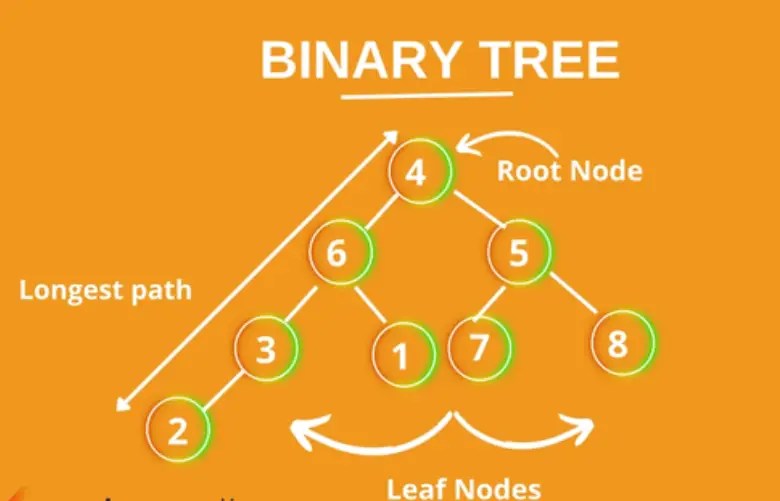Programs
Blogs
Reviews
More
Home
Blogs
Exploring B-Tree Variants: B+-Trees, B*-Trees, and Beyond
Data Structures
Last Updated on :March 19, 2024

B-trees are an effective data structure for effectively organizing and accessing data. However, what if they could be improved still further? This article will explore the variations of B-tree in data structure that offer better speed and scalability, like B+-trees and B*-trees.
We'll also discuss B-trees' potential and how advanced applications utilize them. Do you want to know more? Continue reading to learn the types of binary trees in data structure!
What is B Tree?
B-Tree is a tailored m-way tree with several applications for disk access. A B-Tree of order m can only contain m children and m-1 keys. One of the main benefits of adopting a B tree in the data structure is its capacity to store huge key values and several keys in a single node while maintaining a relatively short tree height.
An M-way tree's characteristics are present in a B tree of order m. It also has the following characteristics.
- A B-Tree has m or fewer children at each node.
- There must be a minimum of two nodes in the root nodes.
- The level of each leaf node must be the same.

Although every node needs a m/2 number of nodes, it isn't essential for them to all have the same number of children.
Significance of B-Tree in Data Storage
The demand for faster access to physical storage mediums such as hard disks led to the development of B-tree. Although they have a greater capacity, backup storage devices are slower. These kinds of data structures that reduce disk access were required.
One key can only be stored in one node of other data structures, like a binary search tree, AVL tree, red-black tree, etc. Such trees grow to enormous heights and take longer to access if you need to store many keys.
On the other hand, B-tree can contain numerous child nodes and store numerous keys in a single node. This drastically reduces the height, enabling quicker disk access.
Introduction to B+-Trees, B*-Trees, and Other Variants
Self-balancing trees that effectively store and retrieve data include B+-trees, B*-trees, and more variations. They work especially well in applications like databases and filesystems, where data is often updated.
The fundamental ideas behind B+ trees and their variations will be covered in this introduction, along with some of the factors that make them so successful.
Don’t know what data structures are? Need to brush up? Check out this article on Data Structures in Java!
B+-Tree: Structure and Characteristics
A self-balancing tree data structure known as a B+-tree effectively stores and retrieves data. It is a B-tree variant that works especially well for applications like databases and filesystems, where data is often changed.
Structure:
Three nodes comprise a B+-tree: the internal, leaf, and root. The root node, the highest node in the tree, might be an internal or a leaf node. Leaf nodes hold keys and references to data records, whereas internal nodes contain these items for child nodes.
Characteristics:
The following features apply to B+-tree in the data structure:
- Since B+ Trees are self-balancing, the tree always keeps its structural equilibrium.
- The B tree in the data structure comes in multiple levels, meaning every node is accessible at different levels.
- The tree can store a lot of info in a little area.
- The keys in the tree are arranged in ascending order because they are ordered.
- This makes it simple to carry out actions that call for sorted data, such as range queries.
Understanding the Role of Leaf Nodes and Non-Leaf Nodes
In a B+-tree, Leaf nodes are the lowest nodes, while Non-leaf nodes are all the others. Leaf nodes store the real data records. As the sole nodes in a B+ tree with real data, they become the most crucial nodes.
Non-leaf nodes' function is to direct the search for data records. For this purpose, they keep the keys that distinguish the data entries in the leaf nodes beneath them. This enables the search to rapidly reduce the list of potential places for a particular data record.
Read more about: AVL Trees in data structure
Comparing B*-Trees with B+-Trees In terms of Performance & Efficiency
Below is a quick comparison of both the B tree data structure, B+ tree and B- tree:
| Basis | B*-tree | B+-tree |
|---|---|---|
| Performance | Quick and effective when it concerns insertion and deletion | Quick and effective when it concerns search and range query |
| Efficiency | Efficient to store vast chunks of data | Efficient for storing small volumes of data |
| Non-Leaf Nodes | ⅔ full (minimum) | ½ full (minimum) |
| Flexibility | Less Than B+-tree | More than B*-tree |
Applications of B-Trees
- It is utilized in sizable databases to access information stored on disks.
- Multilevel indexing is possible with the indexing feature.
- The majority of servers also leverage the B-tree method.
- In CAD systems, B-Trees are used to catalog and search geometric data.

Other applications of B-Trees include encryption, computer networks, and natural language processing.
Learn More: Threaded Binary Tree
Limitations of using B-Tree
- B-Trees can use much disk space because they depend on disk-based data structures.
- Not always the greatest option.
- Comparatively slow to other data structures.
Conclusion
In this guide, we have covered all about B-tree in detail. The study of B-tree variations is an exciting and developing field. B-tree performance and efficiency improvements face new hurdles when new applications and technology are developed. We can create even more potent and adaptable data structures that can be used to address problems in the future by continuing to investigate these variations.
So, are you interested in B-trees? Want to excel in various types of binary trees in data structure? If so, the from Hero Vired is an excellent way to start.
FAQ's
What are the best practices for implementing and utilizing B-Tree variants effectively?
Make the appropriate B-Tree selection for your application. Leverage the B-Tree variation in a manner that benefits from its advantages. And lastly, maintain balance in the B-Tree as well.
Why do you need a B-tree data structure?
B-trees are a self-sustaining tree data structure that is effective for data storage and retrieval. They work especially well in applications like databases and filesystems, where data is often updated.
What are the Basic Operations of B Trees?
Insertion, deletion, and searching are the operations enabled by B trees, and each of these operations has an O(log n) time complexity.
What is B Tree in Data Structure?
A B-tree is a type of self-balancing search tree where every node can carry multiple keys and have a maximum of two children. This binary search tree has been expanded.
High-growth programs
Choose the relevant program for yourself and kickstart your career

Certificate Program in
DevOps & Cloud Engineering
In collaboration with

Part-time · 7.5 months
Apply by:
March 31, 2024
Download Brochure
Internship Assurance

Certificate Program in
Full Stack Development with Specialization for Web & Mobile
Powered by
Part-time · 10 months
Apply by:
Coming Soon
Download Brochure
Placement Assistance

Certificate Program in
Application Development
Powered by
Part-time · 6 Months
Apply by:
Coming Soon
Download Brochure
Internship Assurance

Certificate Program
Cybersecurity Essentials & Risk Assessment
In collaboration with

Part-time · 6 Months
Apply by:
Coming Soon
Download Brochure
Placement Assistance
Blogs from other domain
Carefully gathered content to add value to and expand your knowledge horizons

A Beginners Guide to Data Structures in Java in 2023

Java Operators: Meaning and Types Explained

Best Data Visualization Tools to Know in 2023

12 Major Advantages and Disadvantages of Cloud Computing

Hero Vired is a premium LearnTech company offering industry-relevant programs in partnership with world-class institutions to create the change-makers of tomorrow. Part of the rich legacy of the Hero Group, we aim to transform the skilling landscape in India by creating programs delivered by leading industry practitioners that help professionals and students enhance their skills and employability.
Data Science
Integrated Program in Data Science, AI and ML
Accelerator Program in AI and Machine Learning
Technology
Certificate Program in Full Stack Development with Specialization for Web and Mobile
Certificate Program in DevOps and Cloud Engineering
Certificate Program in Application Development
Finance
Integrated Program in Finance and Financial Technologies
Certificate Program in Financial Analysis, Valuation and Risk Management
Management
Certificate Program in Strategic Management and Business Essentials
Executive Program in Product Management
Certificate Program in Product Management
Certificate Program in Technology-enabled Sales
Vired Links
Contact
DISCLAIMER
- *
These figures are indicative in nature and subject to inter alia a learner's strict adherence to the terms and conditions of the program. The figures mentioned here shall not constitute any warranty or representation in any manner whatsoever.